Reviewing the classic Marvel Age of Comics, Comic Book Art and the Legends who made it possible. Amazon Affiliate
Don't wanna be here? Send us removal request.
Text
Jim Starlin at Marvel: Cosmic Visions, Death Worship, and the Search for Meaning

📚 Want to explore Jim Starlin’s Marvel work? Check it out on Amazon: Marvel by Jim Starlin on Amazon (Affiliate link — helps support my work!)
When you talk about Marvel’s greatest storytellers, Jim Starlin has to be near the top of the list. Not just because he created legends like Thanos, Drax, and Gamora — but because he dragged superhero comics kicking and screaming into the world of cosmic nihilism, existential dread, and deep religious philosophy.
He didn’t just tell stories about heroes saving the universe. He told stories about why the universe might not deserve saving.
Let’s dive into Starlin’s Marvel career — and how his exposure to religion, war, and philosophy forged some of the deepest characters and stories ever put on a comic book page.
From Catholic Upbringing to Cosmic Doubt
Starlin grew up in Detroit, raised Catholic. Like a lot of kids, he got the rules and rituals hammered into him early — but even as a teenager, he started questioning the whole thing.
By the late 1960s, Starlin was soaking in everything: Eastern philosophy, psychedelia, existentialism, the whole counterculture brew. He also served in Vietnam, a real-world nightmare that reinforced his growing sense that authority — whether religious or political — was a scam.
When Starlin got his foot in the door at Marvel in the early '70s, he wasn’t just bringing pencils and ink. He was bringing serious existential baggage — and he turned that into gold.
First Steps: Birth of Thanos and Drax

Starlin’s first big splash was Iron Man #55 (1973). Here, he dropped Thanos and Drax the Destroyer into the Marvel Universe — and instantly rewired the cosmic landscape.
Thanos wasn’t some petty dictator. He was a death-worshiping nihilist, driven by philosophy, not greed. Drax was a weapon engineered with one purpose: kill Thanos. Right from the start, Starlin was asking bigger questions: Is free will even real? Is purpose something we choose, or something imposed on us?
The seeds were planted: Starlin wasn’t writing just superheroes. He was writing cosmic Greek tragedies.
“Religion, war — they teach you there’s an order to things. Then you get older, you realize: the universe is chaos. My characters are fighting that chaos.” — Jim Starlin, The Comics Journal, 1980
Captain Marvel: Death as a Doorway

When Starlin took over Captain Marvel (#25–34), he threw out the old Earth-bound espionage plots and lit the fuse on a cosmic war between Captain Marvel and Thanos.
But the real fight wasn’t about the universe. It was about the soul.
Mar-Vell’s battles became psychedelic trips into the nature of reality. Starlin, influenced by Buddhist and Gnostic ideas, had Mar-Vell confront death not as an enemy, but as an inevitable truth to be accepted.
When Starlin later wrote The Death of Captain Marvel (1982), he broke all the rules. Mar-Vell didn’t go down swinging against a villain — he died of cancer, helpless and human.
No punches could save him. Only peace.
It was one of the rawest, realest things Marvel ever published — and it hit even harder because it was rooted in Starlin’s own loss. His father had passed from cancer.
Adam Warlock: Christ Without Salvation

Starlin’s run on Warlock (Strange Tales #178–181, Warlock #9–15) is where his religious and philosophical obsessions truly exploded.
Warlock wasn’t your typical hero. He was a genetically engineered god wandering the universe in search of purpose. In his path: the Universal Church of Truth, a twisted religious empire built on hypocrisy and oppression.
At the center of it all? The Magus — Warlock’s own future, corrupted self.
Warlock’s battle wasn’t just against evil; it was against destiny itself. Starlin pulled heavy from existentialism: If your future self is a monster, are you already doomed? Can you ever break free from what you’re meant to become?
In the end, Warlock commits a metaphysical suicide — killing his future self to prevent the Magus from ever existing. It’s dark, complicated, and unlike anything else Marvel was publishing at the time.
Starlin wasn’t just taking shots at religious hypocrisy. He was showing that even the idea of a “chosen one” can become a prison.
Thanos: The Universe’s Most Tragic Villain

Thanos wasn’t just another bad guy. Under Starlin, Thanos became the most complex villain in comics.
His obsession with Death (literally personified as a cloaked woman) wasn’t metaphorical. Thanos craved annihilation, believing the universe itself was a mistake — an echo of Gnostic Christianity’s idea that the material world is broken.
Gathering the Infinity Gems wasn’t about power for its own sake — it was about earning Death’s love by returning the universe to nothingness.
In The Infinity Gauntlet (1991), Starlin finally let Thanos win — wiping out half the universe with a snap of his fingers. Heroes didn’t save the day with brute force; they won because Thanos, deep down, knew he didn’t deserve what he had taken.
Thanos was the ultimate existential antihero: fully aware of life’s meaninglessness, craving oblivion, and trapped by his own emptiness.
Infinity War, Crusade, and Beyond: Wrestling with Faith
With Infinity War (1992) and Infinity Crusade (1993), Starlin doubled down on philosophical and religious themes.
Infinity War brought back the Magus — Adam Warlock’s dark half — proving that even in victory, heroes can’t outrun their own shadows.
Infinity Crusade flipped the script: Warlock’s “good” side creates the Goddess, who tries to convert the universe into a fundamentalist utopia. Starlin’s message was clear: even pure good can become tyranny when it stops questioning itself.
Religion wasn’t just a backdrop in these stories — it was the battleground.
Art Style: Visual Philosophy

Starlin’s writing was cosmic, but his art was just as essential.
Twisted dimensions, dreamlike death sequences, vast empty space — his panels made the universe feel terrifying and unknowable. Characters were often dwarfed by endless cosmic backdrops, reinforcing how small and fragile they really were.
His color palettes — psychedelic purples, blues, and reds — gave everything a surreal, almost spiritual tone. Starlin wasn’t just drawing fights. He was drawing the soul’s struggle against an indifferent cosmos.
Legacy: Marvel’s Cosmic Philosopher
Without Jim Starlin, Marvel’s cosmic stories would look a lot different — and a lot shallower.
He didn’t just invent Thanos, Gamora, Drax, Pip the Troll, and a dozen other icons. He invented a tone: deep, weird, philosophical, unafraid to ask uncomfortable questions.
He showed that even in a universe of gods and heroes, the real battles are inside — against doubt, destiny, and the quiet terror that maybe, just maybe, the universe doesn’t care.
And yet, through it all, Starlin’s characters keep fighting. Not because they’ll win — but because fighting, questioning, and searching are all they have.
That’s cosmic storytelling. That’s Jim Starlin.
Starlin’s Definitive Marvel Work: Why You Need to Read It
📖 Buy Marvel by Jim Starlin on Amazon
(Affiliate link – I may earn a small commission at no extra cost to you.)
If you want to understand why Jim Starlin matters — you need to read two essential works: The Death of Captain Marvel and The Infinity Gauntlet.
These aren’t just great comics. They’re the blueprint for everything Marvel cosmic has done since.
The Death of Captain Marvel (1982) is Starlin at his most raw. No universe-ending battles — just a hero facing death like a human being. It’s honest, heartbreaking, and proves what superhero comics can do when they ditch the tropes and tell the truth. It sticks with you.
The Infinity Gauntlet (1991) is Starlin unleashed at the largest scale. Thanos wipes out half the universe with a snap, battles cosmic gods, and still can’t fill the void inside himself. It’s not just an action epic — it’s a meditation on loneliness, desire, and failure disguised as a superhero event. It’s the story that made Thanos a legend.
Both books hold up today — maybe even more now. In a world obsessed with power and control, Starlin’s work reminds us: death, doubt, and cosmic emptiness are the real opponents. And facing them with courage is the only real victory.
If you’ve never read Starlin’s Marvel work, do yourself a favor. Start there. You won’t see superheroes the same way again.
📖 Buy Marvel by Jim Starlin on Amazon
(Affiliate link – I may earn a small commission at no extra cost to you.)
#jim starlin#marvel comics#thanos#adam warlock#captain marvel#infinity gauntlet#cosmic marvel#marvel writers#comic book history#existentialism#philosophy in comics#religion in comics#death of captain marvel#infinity war#infinity crusade#marvel cosmic#marvel villains#comic book legends#comic book analysis#must read comics#classic marvel
5 notes
·
View notes
Text
Venom’s Evolution: From Spider-Man’s Foe to Marvel’s Most Iconic Anti-Hero Across Comics, Games, and Film

Venom, one of Marvel Comics' most enigmatic and multifaceted characters, has undergone a remarkable evolution since his inception. From his debut as a sinister alien symbiote to becoming a complex anti-hero, Venom's journey is a testament to the collaborative genius of writers and artists who have continually redefined his narrative. This article delves into Venom's rich history within Marvel Comics, his significant impact across various media, and the extensive array of merchandise that has solidified his status as a cultural icon
Genesis of the Symbiote: Secret Wars (1984)
Venom's origin traces back to Marvel Super Heroes Secret Wars #8 (1984), where Spider-Man acquires a sleek black costume from an alien device during a cosmic battle on Battleworld. Unbeknownst to him, this costume is a living symbiote with its own consciousness. This narrative twist introduced a new dimension to Spider-Man's character, setting the stage for future developments
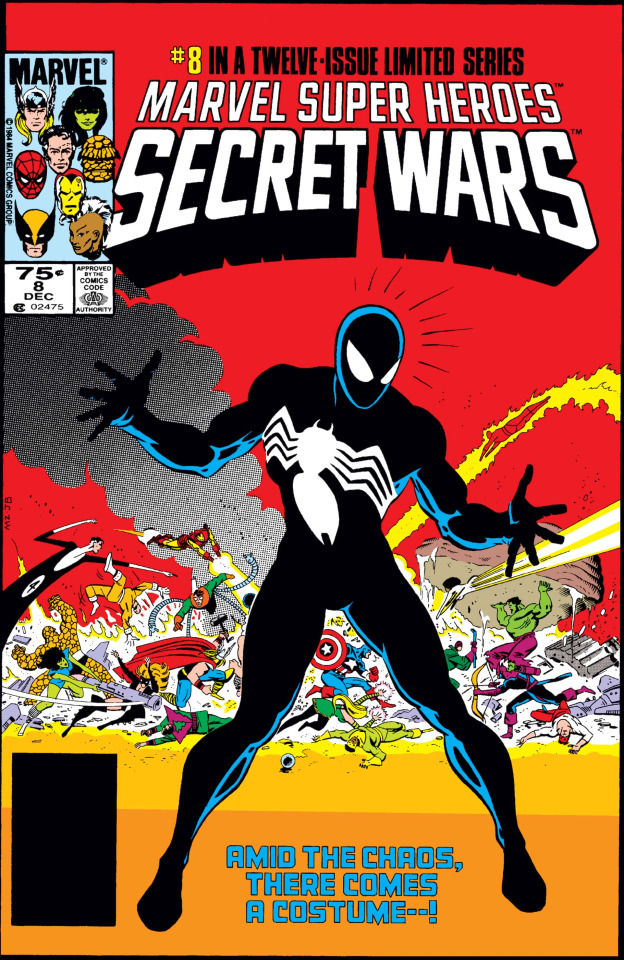
Transformation into Venom: The Birth of an Icon
The symbiote's true nature unfolds in The Amazing Spider-Man #252 (1984), where it exhibits a sinister will, attempting to permanently bond with Peter Parker. Realizing the parasitic intent of the symbiote, Parker rejects it, leading to its fusion with disgraced journalist Eddie Brock. This union births Venom, a being fueled by mutual animosity towards Spider-Man, marking his full debut in The Amazing Spider-Man #300 (1988)
Architects of Venom: Key Contributors
Venom's evolution is the result of contributions from several visionary creators:
David Michelinie: Co-creator of Venom, Michelinie crafted the character's complex psychology and motivations, emphasizing the symbiotic relationship's duality
Todd McFarlane: Renowned for his dynamic artistry, McFarlane introduced Venom's menacing aesthetic, characterized by an imposing physique, elongated tongue, and razor-sharp teeth, which became defining features
Mark Bagley: Instrumental in the Venom: Lethal Protector series, Bagley's illustrations further cemented Venom's visual identity, balancing ferocity with nuanced emotion
Venom's Evolution: From Villain to Anti-Hero
Initially portrayed as a formidable adversary to Spider-Man, Venom's character arc underwent significant transformation:
Lethal Protector Era: In the 1993 miniseries Venom: Lethal Protector, Venom transitions from villain to anti-hero, relocating to San Francisco and battling greater evils, reflecting a shift towards a more nuanced character
Agent Venom: The 2011 storyline introduces Flash Thompson as the new host, portraying Venom as a government operative, adding layers of complexity and exploring themes of redemption and control
Donny Cates' Definitive Run

In 2018, writer Donny Cates, alongside artist Ryan Stegman, embarked on a seminal run that redefined Venom's mythos:
Introduction of Knull: Cates introduced Knull, the primordial god of symbiotes, expanding Venom's lore and connecting him to a cosmic narrative, enriching the character's backstory
'King in Black' Event: This crossover event sees Knull invading Earth, with Venom playing a pivotal role in the planet's defense, highlighting his evolution from antagonist to central hero within the Marvel Universe
Venom Beyond Comics: Multimedia Presence
Venom's appeal has transcended comic books, permeating various forms of media:
Video Games: Venom has been featured in numerous games, notably Marvel's Spider-Man 2 and Marvel Rivals. In Marvel Rivals, Venom's popularity is evident with the introduction of a twerk emote, reflecting his cultural impact

Film Adaptations: Tom Hardy's portrayal of Eddie Brock/Venom in Sony's Spider-Man Universe has been commercially successful. The films, including Venom (2018), Venom: Let There Be Carnage (2021), and Venom: The Last Dance (2024), have solidified Venom's status in mainstream cinema
Venom Merchandise: A Collector's Haven
Venom's iconic status is celebrated through a diverse range of merchandise:
Epic Collections: Marvel's Venom Epic Collection series compiles essential storylines, offering readers a comprehensive journey through Venom's evolution. These volumes are invaluable for both new readers and longtime fans
Action Figures and Statues: High-quality action figures and statues capture Venom's menacing presence, with intricate designs that appeal to collectors and enthusiasts
Apparel: Venom-themed clothing, including t-shirts, hoodies, and accessories, allowing fans to showcase their affinity for the character, blending style with fandom
Conclusion
Venom's trajectory from a malevolent symbiote to a multifaceted anti-hero encapsulates the dynamic storytelling that defines Marvel Comics. Through the visionary work of creators like Michelinie, McFarlane, and Cates, Venom has become a symbol of complexity and redemption. His pervasive presence across comics, films, video games, and merchandise underscores his enduring appeal and cultural significance
Get the Ultimate Venom Collection

10 notes
·
View notes
Text
Marvel's Decade of Transformation: How Six Writers Redefined the Marvel Universe (2009-2019)

Between 2009 and 2019, Marvel Comics experienced one of its most transformative decades, thanks to a new wave of visionary writers who redefined iconic characters and reshaped storytelling conventions. While Marvel has always been home to dynamic and ever-evolving narratives, few creators have had as profound an impact as Jonathan Hickman, Jason Aaron, Chip Zdarsky, Donny Cates, Dan Slott (specifically for Superior Spider-Man), and Al Ewing (with Immortal Hulk).
Get their Collection
Jonathan Hickman Collection Jason Aaron Collection Chip Zdarsky Collection Donny Cates Collection Dan Slott Collection Al Ewing Collection
Each of these writers brought a distinct storytelling voice to the table, and their works were met with critical and commercial success. They tackled long-form narratives, reinvented legacy characters, and engaged readers with fresh perspectives on Marvel’s mythos. This article explores how their most acclaimed works between 2009 and 2019 shaped the Marvel Universe and left an enduring impact on fans and critics alike.

Jonathan Hickman: The Architect of Grand Narratives
Fantastic Four / FF (2009-2012): Reshaping Marvel’s First Family
When Hickman took over Fantastic Four in 2009, the title had lost some of its luster. However, under his direction, it became a meticulously crafted, interwoven epic that expanded the mythos of Marvel’s First Family. Hickman introduced major concepts such as the Future Foundation, the Council of Reeds, and the War of the Four Cities, creating a deeply compelling, long-form narrative.
Why It Mattered:
Fantastic Four #587 (2011), featuring the death of Johnny Storm, was a major sales success and drove massive interest in the series.
The FF spinoff allowed Hickman to introduce a younger generation of heroes and thinkers, giving Marvel a new direction for the franchise.
Critics praised Hickman’s intricate storytelling, with IGN calling it "a masterclass in long-form narrative structure."
Avengers, New Avengers & Secret Wars (2013-2015): The Grandest Marvel Saga
With Avengers and New Avengers, Hickman built toward 2015’s Secret Wars, a colossal event that deconstructed and redefined Marvel’s multiverse. The Incursions, the Illuminati’s moral dilemmas, and Doctor Doom’s godhood in Battleworld showcased Hickman’s unparalleled ability to weave high-concept sci-fi into superhero storytelling.
Why It Mattered:
Secret Wars #1 sold 527,678 copies, making it one of Marvel’s highest-selling books of the decade.
It provided a clean slate for Marvel to reset its universe while maintaining continuity, allowing newer readers to jump in without alienating long-time fans.
House of X / Powers of X (2019): A New Dawn for Mutantkind
By 2019, Marvel’s X-Men franchise had grown stagnant. Enter Hickman, whose dual miniseries House of X and Powers of X completely redefined the mutant status quo, introducing the Krakoan era, the mutant resurrection protocol, and the political power of mutantkind.
Why It Mattered:
House of X #1 sold 185,630 copies, with the entire series receiving near-universal acclaim.
Fans and critics celebrated Hickman’s reinvention, with Polygon calling it "the most exciting X-Men story in decades."

Jason Aaron: The Mythmaker of Asgard
Thor: God of Thunder (2012-2014): Introducing Gorr the God Butcher
Aaron’s Thor: God of Thunder run reintroduced the God of Thunder with an epic, mythological scope, particularly through introducing Gorr the God Butcher. The triple-timeline structure—following a young, present-day, and future Thor—added depth to the character’s struggles with godhood.
While Thor: Love and Thunder introduced Gorr, many fans and critics felt the movie did not fully capture the depth of his character from the comics.
Why It Mattered:
Gorr became one of Thor’s most compelling foes, later adapted into 2022’s Thor: Love and Thunder.
Critics, including Comic Book Resources, hailed it as "one of the best Thor stories ever written."
The Mighty Thor (2015-2018): The Era of Jane Foster
Aaron took a bold step by making Jane Foster the new Thor, a move that initially divided fans but ultimately proved a massive success. Jane’s battle with cancer alongside her heroic journey added layers of emotional depth.
Why It Mattered:
The Mighty Thor #1 debuted with over 150,000 copies sold, indicating strong interest.
Fans embraced Jane’s Thor, and her legacy continues in both comics and film adaptations.
War of the Realms (2019): The Culmination of a Saga
Aaron’s years of storytelling paid off in War of the Realms, a massive Marvel event where Malekith the Accursed launched a full-scale invasion of Earth.
Why It Mattered:
The event spanned over 50 tie-ins, making it one of Marvel’s largest crossover events of the decade.
Aaron’s Thor saga is now regarded as one of the best in Marvel history, with IGN calling it "a masterclass in epic storytelling."

Chip Zdarsky: The Emotional Core of Marvel’s Street-Level Heroes
Daredevil (2019-Present): A Bold New Take on the Man Without Fear
Zdarsky’s Daredevil took Matt Murdock down a darker, more introspective path. His struggle with morality, guilt, and vigilantism struck a chord with fans and critics alike. Zdarsky explored themes of justice, faith, and redemption, particularly through Daredevil’s accidental killing of a criminal and his subsequent crisis of conscience.
Why It Mattered:
Readers praised Zdarsky’s writing for its psychological depth, with The Beat calling it "one of the most compelling Daredevil runs in years."
The book has maintained strong sales, consistently ranking among Marvel’s top street-level titles.

Donny Cates: The Cosmic Horror Storyteller
Venom (2018-2021): Redefining Symbiote Mythology, Doctor Strange (2017-2018) & The Death of Lockjaw
Cates introduced Knull, the God of the Symbiotes, fundamentally altering Venom’s mythology and establishing a cosmic horror vibe for the character.
Cates’ Doctor Strange run was filled with bold, supernatural storytelling, reintroducing Stephen Strange as the God of Magic and pitting him against some of his most formidable foes. One of the most emotional moments in his tenure was the tragic death of Lockjaw, the beloved teleporting Inhuman dog, which shocked and devastated fans.
Why It Mattered:
Venom #1 sold over 200,000 copies, proving Eddie Brock’s enduring popularity.
Fans and critics hailed it as a "modern redefinition of Venom’s legacy."
Cates’ reinvention of Doctor Strange blended high-stakes mysticism with deeply personal storytelling.
Fans praised his ability to balance grand cosmic narratives with intimate character moments, making it a standout run in modern Doctor Strange history.

Dan Slott: The Superior Storyteller
Superior Spider-Man (2013-2014): The Rise of Otto Octavius
In a controversial yet brilliant move, Slott replaced Peter Parker with Doctor Octopus inhabiting Spider-Man’s body. Initially divisive, Superior Spider-Man became one of the most celebrated Spider-Man runs of the decade.
Why It Mattered:
The series consistently outsold Amazing Spider-Man during its tenure.
Fans grew to love Otto’s arc, proving that even villains can evolve into complex, compelling protagonists.

Al Ewing: The Master of Horror
Immortal Hulk (2018-2021): A Gothic Reinvention
Ewing’s Immortal Hulk embraced body horror and psychological dread, making Bruce Banner’s transformation into the Hulk feel like a horror movie.
Why It Mattered:
Immortal Hulk #1 sold over 90,000 copies, making it one of the best-selling Hulk comics in years.
Critics compared it to Alan Moore’s Swamp Thing, praising its literary depth.
Conclusion
Between 2009 and 2019, these six writers revolutionized Marvel Comics, producing some of the most beloved and influential stories of the modern era. Their ability to craft intricate, emotionally resonant, and action-packed narratives not only reinvigorated long-standing characters but also introduced compelling new ideas that continue to shape the Marvel Universe today.
From Hickman’s high-concept reinventions of the Fantastic Four and X-Men, to Aaron’s mythic sagas with Thor, and Zdarsky’s deeply introspective Daredevil, each writer brought something unique to the table. Donny Cates pushed the boundaries of cosmic horror with Doctor Strange, while Dan Slott’s Superior Spider-Man gave readers a thrillingly fresh take on Peter Parker’s world. Meanwhile, Al Ewing’s Immortal Hulk transformed Bruce Banner’s story into one of the most compelling and unsettling horror-driven narratives in Marvel history.
Beyond their storytelling, these writers also helped drive significant commercial success, with many of their books topping sales charts and garnering critical acclaim. Their works laid the foundation for future adaptations in film, television, and other media, further cementing their importance in Marvel’s legacy.
As the next decade unfolds, the influence of these creators will continue to be felt. Their narratives have reshaped how fans perceive these iconic heroes, ensuring that Marvel Comics remains a powerhouse of creativity and innovation for years to come. Their impact proves that at its core, Marvel thrives on bold storytelling, daring reinventions, and a deep understanding of what makes these characters resonate with audiences worldwide. Get their Collection
Jonathan Hickman Collection Jason Aaron Collection Chip Zdarsky Collection Donny Cates Collection Dan Slott Collection Al Ewing Collection
1 note
·
View note
Text
The Clone Conundrum: How the 90s Spider-Man Saga Scrambled a Golden Opportunity
Get Spider-Man: Clone Saga Omnibus Vol. 1

Get Spider-Man: Clone Saga Omnibus Vo. 2
Few Spider-Man storylines have left as indelible a mark on comic book history as the infamous “Clone Saga” of the 1990s. What began as a bold narrative experiment evolved—or devolved—into a polarizing epic that alienated fans, frustrated creators, and complicated Spider-Man’s mythos. Despite its stellar roster of writers and artists, the Clone Saga became a sprawling, convoluted tale that epitomized missed potential. It was a fascinating concept on paper that, in execution, felt more like a scrambled egg than the golden goose Marvel hoped it would be.
This is the story of how a saga that could have been one of the most intriguing and impactful Spider-Man narratives instead became one of the most controversial.
The Promise of Simplicity
The Clone Saga wasn’t an entirely new concept. It traced its roots back to the 1970s when the original “clone” storyline introduced a duplicate of Peter Parker. That story ended with the apparent death of the clone, leaving Peter to continue as Spider-Man. In the 1990s, Marvel revisited this idea with a compelling twist: what if the Peter Parker fans had followed for decades wasn’t the real Peter Parker at all?

This premise offered a tantalizing opportunity to strip away decades of continuity baggage and return to the core of Spider-Man’s identity—a young, struggling hero trying to balance his personal life with his responsibilities as a crimefighter. By introducing Ben Reilly, Peter’s clone, as the “real” Spider-Man, Marvel aimed to rejuvenate the character and give fans a fresh perspective.
But here’s where things started to go wrong.
A Saga Stretched Too Thin
The Clone Saga was originally intended to last a few months. It was a straightforward tale of identity, responsibility, and self-discovery. However, as sales for Spider-Man comics surged during the saga’s early issues, Marvel’s editorial team decided to extend the storyline. What was meant to be a tightly woven narrative spiraled into a labyrinthine epic that stretched across multiple titles and years.
As the story dragged on, it became increasingly convoluted.
• New characters like Judas Traveller and Scrier, who were intended to add intrigue, instead felt out of place and disconnected from Spider-Man’s grounded world.
• Twists and reveals—such as Ben Reilly being the “real” Peter Parker and later reversing this revelation—alienated fans who felt jerked around by the shifting narrative.

Get Marvel Legends Ben Reilly Action Figure • The resurrection of Norman Osborn, the original Green Goblin, was a particularly contentious decision. Osborn’s death had been a defining moment in Spider-Man’s history, and bringing him back felt like a betrayal of that legacy.

The result? Reader fatigue. Fans who initially embraced the storyline grew frustrated by its seemingly endless detours and lack of resolution.
The Creative Struggles
Behind the scenes, the Clone Saga was a battleground of conflicting visions. Writers and editors clashed over the direction of the story, leading to inconsistencies in tone and plot. Howard Mackie, one of the key creators involved, later admitted that the saga became too unwieldy, with too many cooks in the kitchen.

Glenn Greenberg, author of “The Osborn Journal,” questioned the logic behind key plot points, such as Norman Osborn’s apparent willingness to let major events unfold without intervening. These inconsistencies undermined the story’s credibility and left readers scratching their heads.
The Fans Speak Out
If there was one thing the Clone Saga did well, it was spark debate. Fans were vocal about their dissatisfaction, particularly with the decision to replace Peter Parker with Ben Reilly. Peter Parker was, and remains, a beloved character. For many readers, the idea that he might be a clone was not only shocking but also unwelcome.
The backlash was so intense that Marvel eventually reversed course, reinstating Peter Parker as the one true Spider-Man. But by then, the damage had been done. The saga’s prolonged runtime and narrative missteps had alienated many readers, some of whom abandoned the comics altogether.
Bright Spots in the Chaos
It’s important to note that the Clone Saga wasn’t without merit. Despite its flaws, it introduced compelling new characters and ideas that left a lasting impact on Spider-Man lore.

• Ben Reilly, though divisive, gained a dedicated fanbase. His journey as the Scarlet Spider offered a fresh take on the Spider-Man mythos, and his struggles mirrored Peter Parker’s in interesting ways.
• The saga explored themes of identity and self-worth, posing thought-provoking questions about what it truly means to be “real.”
• The artwork by artists like Mark Bagley and Sal Buscema was consistently strong, capturing the energy and emotion of Spider-Man’s world.
These elements showed that the Clone Saga had the potential to be something great. Unfortunately, they were overshadowed by the story’s larger flaws.
The Aftermath
Marvel didn’t shy away from acknowledging the Clone Saga’s shortcomings. The company even poked fun at the storyline with the parody comic “Spider-Man: 101 Ways to End the Clone Saga” and a gag cover in an issue of “What If.” These self-referential nods highlighted Marvel’s awareness of the saga’s reception among fans and creators.

In the years since, the Clone Saga has been revisited and re-evaluated. While it remains a cautionary tale about the dangers of overextending a storyline, it’s also a testament to the enduring appeal of Spider-Man as a character. Even at its most chaotic, the Clone Saga reflected the core themes of responsibility, identity, and perseverance that have defined Spider-Man for decades.
A Golden Opportunity, Squandered
In hindsight, the Clone Saga had all the ingredients to become one of Spider-Man’s most intriguing storylines. It had a compelling premise, talented creators, and the potential to redefine the character in meaningful ways. Instead, it became a case study in how editorial interference and commercial pressures can derail a story.
The saga’s greatest tragedy is that it wasn’t inherently a bad idea. On the contrary, the concept of Peter Parker confronting his own identity and legacy was rich with narrative possibilities. But by stretching the story too thin and introducing too many twists, Marvel turned what could have been a streamlined and impactful tale into a convoluted mess.
Conclusion: Lessons Learned
The 90s Clone Saga remains a polarizing chapter in Spider-Man’s history. For some, it’s a nostalgic relic of an era defined by excess and experimentation. For others, it’s a cautionary tale about the perils of prioritizing sales over storytelling.
Ultimately, the Clone Saga was a missed opportunity—a golden idea that could have reinvigorated Spider-Man’s mythos but instead became a symbol of creative overreach. It’s a reminder that even the most beloved characters can stumble when their stories lose focus.
Yet, despite its flaws, the Clone Saga endures as a fascinating piece of Spider-Man lore. It’s a testament to the character’s resilience that even when his world was at its most chaotic, his core appeal remained intact. Spider-Man is and always will be, the friendly neighborhood hero who inspires us to keep going, no matter how tangled life’s web becomes.

Get Spider-Man: Clone Saga Collection
Get Spider-Man: Clone Saga Action Figures
#Spider man#clone saga#peter parker#ben reilly#marvel in the 90s#90s marvel comics#marvel comics#marvel cult classics
5 notes
·
View notes
Text
Marvel Comics in the 1980s: Redefining Superheroism

The 1980s were a transformative decade for Marvel Comics. During this period, the company revolutionized the superhero genre by introducing complex narratives, embracing societal challenges, and focusing on the humanity of its characters. As the cultural, political, and technological landscape of the United States evolved, Marvel’s approach to storytelling reshaped the comic book industry and cemented the company’s role as a pioneer in modern superheroism.
Historical Context

The 1980s marked a pivotal time in American history. The United States grappled with economic challenges, cultural shifts, and the lingering tension of the Cold War. In this environment, Marvel’s narratives evolved to reflect the complexities of contemporary life. Gone were the simplistic stories of invincible heroes; instead, Marvel’s comics mirrored societal anxieties and aspirations. This shift elevated the medium and made it a mirror for the audience’s struggles and triumphs.
Buy 1980s Essential Marvel Reads
The Rise of Complex Narratives
One of Marvel’s most significant contributions during the 1980s was its emphasis on complex, character-driven storytelling. Creators like Chris Claremont, Frank Miller, and John Byrne pushed the boundaries of traditional superhero tales. Claremont’s Uncanny X-Men explored themes of discrimination, identity, and acceptance, resonating with readers who faced similar struggles in real life. Meanwhile, Miller’s work on Daredevil transformed the character into a gritty, morally complex hero grappling with crime and corruption in Hell’s Kitchen. These narratives introduced readers to flawed protagonists who navigated personal dilemmas, making them relatable and compelling.
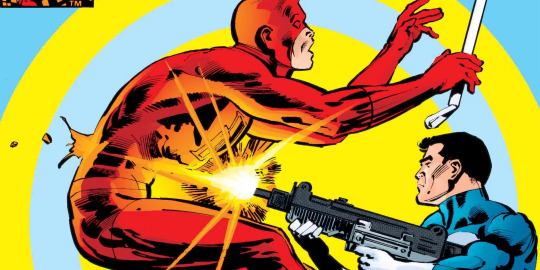
This era also saw the rise of anti-heroes like Wolverine and the Punisher. Characters with morally ambiguous motives challenged the archetype of the noble, altruistic superhero. These stories underscored that heroism often comes with sacrifices, failures, and ethical dilemmas—a departure from the clear-cut morality of earlier decades.
Social Issues in Marvel’s Narratives
Marvel Comics became a platform for addressing pressing social issues during the 1980s. The X-Men series served as an allegory for marginalized communities, tackling themes of prejudice and social justice. Characters like Storm and Kitty Pryde embodied struggles for equality and representation, offering readers diverse perspectives.
Additionally, Marvel’s stories addressed topics like addiction and economic disparity. For instance, Tony Stark’s battle with alcoholism in the Demon in a Bottle storyline highlighted the human vulnerabilities of superheroes. This narrative not only added depth to Stark’s character but also showcased Marvel’s willingness to confront taboo subjects throughout the decade.

The company also began to explore LGBTQ+ themes, albeit subtly due to societal constraints at the time. Characters like Northstar, introduced in Alpha Flight, were among the first openly gay superheroes, paving the way for greater representation in comics.
Political Influences

The political climate of the 1980s heavily influenced Marvel’s storytelling. The Reagan administration’s conservative policies, the AIDS crisis, and the escalation of the Cold War were reflected in the pages of its comics. For example, Captain America often wrestled with his role as a symbol of American ideals in a time of political and social unrest. These narratives questioned the nature of patriotism and the responsibilities of those in power.
Similarly, the X-Men stories drew parallels between the Cold War’s ideological battles and the mutants’ struggle for acceptance. These allegories allowed Marvel to comment on global events while maintaining the fantastical elements of superhero storytelling.
Buy 1980s Essential Marvel Reads
Artistic Innovations

Marvel’s artistic approach in the 1980s was as groundbreaking as its storytelling. The company embraced dynamic, expressive art styles that mirrored the decade’s cultural trends. Influences from street art, pop culture, and the burgeoning music scene found their way into Marvel’s pages, giving the comics a contemporary aesthetic.
Artists like John Byrne, Frank Miller, and Bill Sienkiewicz introduced innovative techniques that pushed the boundaries of comic book visuals. Sienkiewicz’s work on New Mutants incorporated surreal and abstract elements, redefining what superhero art could be. This period also saw the integration of darker, more realistic tones, aligning the visuals with the gritty narratives of the time.
Expansion into Other Media

The 1980s marked Marvel’s growing presence beyond comic books. Animated series like Spider-Man and His Amazing Friends and The Incredible Hulk introduced Marvel’s characters to new audiences. These adaptations retained the complexity and relatability of the source material, further solidifying Marvel’s cultural impact.
Marvel’s characters also began appearing in live-action films and television shows. Although many of these projects were modest by today’s standards, they laid the groundwork for the blockbuster superhero films that dominate popular culture today.
Legacy of the 1980s

The innovations of the 1980s left an indelible mark on Marvel Comics and the broader comic book industry. The decade’s emphasis on character depth, social relevance, and artistic experimentation set a new standard for storytelling. These changes not only appealed to a more mature audience but also elevated comic books as a legitimate medium for exploring complex themes.
Characters and narratives from this era continue to resonate with readers and audiences today. The X-Men, for example, remain a powerful symbol of diversity and inclusion, while anti-heroes like Wolverine and the Punisher have become iconic figures in popular culture. Moreover, the storytelling techniques and artistic styles pioneered in the 1980s have influenced generations of creators, ensuring Marvel’s legacy as a trailblazer in the world of comics.
Marvel Comics’ transformation during the 1980s exemplifies the power of storytelling to reflect and challenge societal norms. By embracing complexity, diversity, and innovation, Marvel redefined superheroism and secured its place as a cultural cornerstone for decades to come.
Buy 1980s Essential Marvel Reads

#marvel comics#1980s culture#Comic Book History#X men legacy#superhero evolution#frank miller#chris claremont#pop culture history#marvel legacy#comic book nostalgia
17 notes
·
View notes
Text
David Michelinie: A Master Storyteller

David Michelinie, a revered luminary in the domain of comic book scripting, stands as a beacon of influence in the vast Marvel Comics realm. Through his exceptional narrative prowess, Michelinie has etched an unforgettable legacy in iconic series like Iron Man and Spider-Man, enchanting readers with his imaginative storylines and character evolution
Marvel Masterworks by David Michelinie
A standout collaboration for Michelinie was with his counterpart Bob Layton on Iron Man, a partnership that exemplified creative synergy at its zenith. Together, they revitalized the character, pushing boundaries and exploring intricate themes that resonated profoundly with audiences. Their work on Iron Man, notably in groundbreaking issues like "Demon in a Bottle" (Iron Man #120-128), showcased Michelinie's talent for delving into profound character arcs and addressing real-world issues within the superhero genre
"Demon in a Bottle" received critical acclaim for its portrayal of Tony Stark's struggle with alcoholism. The storyline was praised for its realistic depiction of the issue and its impact on the superhero genre. It resonated with audiences and even garnered recognition from NGOs dedicated to assisting individuals dealing with alcoholism
Regarding the "Doomquest" story, this arc involves Iron Man and Doctor Doom ending up in Camelot due to time travel. The storyline showcases an intriguing blend of time-travel elements with the superhero narrative, offering readers a unique and captivating adventure featuring two iconic characters in an unexpected setting

"Armor Wars" is a notable storyline in Iron Man comics that was written by David Michelinie and illustrated by Bob Layton. In this storyline, Tony Stark discovers that his technology has been used by others without his permission. This leads him on a mission to reclaim and destroy his stolen technology to prevent it from falling into the wrong hands. The "Armor Wars" storyline not only showcases Tony Stark's determination and resourcefulness but also delves into the consequences of his actions and the ethical dilemmas he faces. Michelinie's storytelling and Layton's artistry in "Armor Wars" further solidified Iron Man's character development and contributed to the complexity and depth of the series
In addition to his contributions to Iron Man, Michelinie played a pivotal role in shaping the world of Spider-Man, another cornerstone of the Marvel Comics universe. His work on storylines after Tom DeFalco's "The Alien Costume Saga" (The Amazing Spider-Man #252-259) would make us see the black symbiote suit evolve into the notorious villain Venom thanks to it finding a new host in Eddie Brock in the Amazing Spider-Man #300. Michelinie's talent for crafting engaging narratives and creating compelling characters solidified his reputation as a master storyteller within the comic book industry
Marvel Masterworks by David Michelinie
Beyond his work on Iron Man and Spider-Man, Michelinie's creative influence extended to a myriad of other Marvel characters, including Daredevil, the Avengers, and the Hulk. His most underrated works are for Marvel's Graphic Novel line in the 80s for which he wrote Avengers: Emperor Doom, The Aladdin Effect featuring the Wasp, Storm, She-Hulk, and Tigra, and The Revenge of the Living Monolith starring the Fantastic Four, the Avengers, and Spider-Man

Through collaborations with esteemed Marvel artists such as Bob Layton, John Romita Jr., Bob Hall, Greg LaRocque, Marc Silvestri, Todd McFarlane, and Mark Bagley, Michelinie brought visual richness to his captivating storylines, seamlessly blending art and narrative to captivate readers
Michelinie's collaboration with Todd McFarlane on The Amazing Spider-Man marked a significant chapter in his illustrious career in the realm of comic book writing. Together, Michelinie and McFarlane worked on key issues like the "Assasin Nation Plot" storyline (The Amazing Spider-Man #320-325), where Spider-Man gets tangled in an international conspiracy to murder a head of state. This arc showcased Michelinie's ability to push the boundaries of traditional superhero storytelling, adding layers of complexity to the character and exploring new dimensions of Spider-Man's abilities and challenges
Additionally, Michelinie's partnership with Todd McFarlane led to the creation of visually striking and dynamic action sequences that captivated readers and solidified their place as a dynamic creative duo within the Marvel Comics universe. For starters, they both created Venom (Eddie Brock)

With Mark Bagley, his biggest highlight would be in the "Maximum Carnage" crossover event in which Michelinie made significant contributions to the Spider-Man series. Firstly, he and Mark Bagley co-created Carnage, a valuable addition to both Spider-Man and Venom's rogues galleries who would then inflict "Maximum Carnage" on New York. The event featured a massive battle involving Spider-Man and other Marvel characters against the villainous Carnage and his team of supervillains. Michelinie's storytelling in "Maximum Carnage" added depth to the Spider-Man narrative and further established his reputation as a skilled writer in the realm of superhero comics. Overall, Michelinie's collaborations with both Todd McFarlane and Mark Bagley further solidified his reputation as a master storyteller and enriched the Marvel Comics universe with memorable and impactful narratives that continue to resonate with fans and readers alike
David Michelinie's enduring legacy in the realm of Marvel Comics stands as a testament to his storytelling prowess and his ability to forge deep connections with readers. His contributions to beloved characters and iconic storylines have left an indelible impact on the comic book landscape, inspiring generations of fans and creators alike. As a visionary architect of the Marvel Universe, Michelinie's work continues to resonate with audiences, ensuring that his legacy will endure for years to come
Marvel Masterworks by David Michelinie
1 note
·
View note
Text
Remembering The Keeper of Continuity: Mark Gruenwald

Mark Gruenwald stands as a towering figure in the history of Marvel Comics, his career spanning from the late 1970s until his untimely passing in 1996. From his humble beginnings as a writer and fill-in artist to his influential role as Marvel's Executive Editor, Gruenwald left an indelible mark on the comic book industry, particularly through his meticulous attention to continuity and his creative contributions to numerous iconic titles
Check Out Mark Gruenwald's Marvel Masterworks
Early Career and Rise to Prominence

Mark Gruenwald joined Marvel Comics in 1978 under the mentorship of Jim Shooter, quickly establishing himself as a reliable writer and artist. His journey from scripting and illustrating to editorial roles was meteoric. By the early 1980s, he had become an editor for flagship titles such as:
The Avengers: Gruenwald oversaw various story arcs during his tenure, including notable issues like "The Korvac Saga" (Avengers #167-177) and "Under Siege" (Avengers #270-277)
Captain America: His run on Captain America (#307-443) is considered one of the most definitive, exploring themes of patriotism, morality, and the burden of wielding great power
Iron Man: Gruenwald contributed to Iron Man during a pivotal period, overseeing storylines like "Armor Wars" (Iron Man #225-232) which delved into Tony Stark's ethical struggles
Thor: Though not the regular editor, Gruenwald's influence extended to significant storylines such as "The Surtur Saga" (Thor #340-353), which showcased epic battles and Norse mythology
Spider-Woman: He edited various issues during his editorial tenure, contributing to the character's development and narrative direction
What If: Known for exploring alternate realities and hypothetical scenarios, Gruenwald's editorial oversight ensured these stories expanded Marvel's multiverse while maintaining coherence
The Guardian of Continuity
Gruenwald was renowned for his stringent approach to continuity, ensuring that Marvel's vast universe remained cohesive and interconnected. His commitment to maintaining consistency across titles became a hallmark of his editorial philosophy, earning him respect and admiration from both colleagues and readers alike

Contributions as a Writer
Beyond his editorial duties, Mark Gruenwald distinguished himself as a talented writer, crafting compelling narratives that resonated with fans:
Captain America: His writing on Captain America not only shaped the character's moral compass but also introduced innovative storylines such as "The Captain" (Captain America #332-350) where John Walker took up the mantle
Quasar: Gruenwald's creation and stewardship of Quasar (Quasar #1-60) showcased his ability to develop new characters and explore cosmic themes within the Marvel Universe
Squadron Supreme: As both writer and editor, he penned the iconic "Squadron Supreme" series (Squadron Supreme #1-12), a deconstruction of superhero tropes that delved into complex moral and political dilemmas

Inspirations and Mentors
Gruenwald's impact extended beyond his creative work. He inspired characters such as Mobius in the Fantastic Four series (starting with issue #346 in 1990), conceived by Walt Simonson, reflecting Gruenwald's influence on Marvel's mythology of time and continuity. Moreover, he credited Dennis O'Neil, the esteemed comic book writer and editor, as a mentor whose guidance shaped his storytelling sensibilities

Legacy and Impact
Mark Gruenwald's sudden passing in 1996 marked the end of an era at Marvel Comics. His meticulous attention to detail, his unwavering commitment to continuity, and his innovative storytelling continue to inspire generations of comic book creators. His legacy lives on through the characters he shaped and the narrative foundations he laid, reminding us of the enduring power of storytelling to captivate and connect with audiences

In conclusion, Mark Gruenwald's journey from a young writer and artist to Marvel's Executive Editor epitomizes his dedication to comics and his profound impact on the industry. His contributions as a writer, editor, and guardian of continuity have left an indelible mark on the Marvel Universe. As we celebrate his life and work, we recognize his enduring legacy as one of Marvel's unsung heroes, whose dedication to storytelling continues to resonate with fans worldwide
Mark Gruenwald's story is a testament to the transformative power of creativity, dedication, and the profound impact one individual can have on an entire universe of imagination
Check Out Mark Gruenwald's Marvel Masterworks

#mark gruenwald#marvel comics#bronze age comics#jim shooter#roger stern#walt simonson#david michelinie#j.m. dematteis#stan lee#captain america#squadron supreme#quasar#TVA#mobius m mobius
17 notes
·
View notes
Text
0 notes
Text
Unraveling the Legacy: Steve Englehart's Impactful Journey at Marvel Comics

In the intricate tapestry of comic book history, certain creators stand out as architects of enduring legacies. Among them is Steve Englehart, a prolific writer whose imaginative storytelling and nuanced characterizations have left an indelible mark on the Marvel Universe. Throughout his tenure at Marvel Comics, Englehart crafted narratives that transcended the confines of the page, breathing new life into iconic characters and redefining the landscape of superhero storytelling
Early Career and Arrival at Marvel
Before his ascent to prominence at Marvel, Englehart honed his craft through various ventures in the comic book industry. His journey towards the House of Ideas began with a passion for storytelling and a keen eye for character dynamics. Upon joining Marvel Comics, Englehart quickly distinguished himself with his inventive approach to superhero narratives, earning him a place among the company's top writers
Captain America: Redefining a Patriotic Icon
Englehart's tenure at Marvel is perhaps best remembered for his transformative run on "Captain America." Englehart embarked on a daring exploration of patriotism, identity, and the moral complexities of heroism during his time on the title. Through Captain America's lens, Englehart crafted compelling narratives that resonated with readers on a profound level
One of Englehart's most acclaimed story arcs, "The Secret Empire Saga," remains a seminal moment in Captain America's history. Englehart delved into the heart of America's political landscape in this epic tale, confronting societal issues with unflinching honesty. The storyline culminated in a shocking revelation that shook the foundations of the Marvel Universe, leaving a lasting impact on Captain America's legacy

Exploring Other Marvel Characters
While Englehart's tenure on "Captain America" garnered widespread acclaim, his creative influence extended far beyond the Star-Spangled Avenger. Englehart's work on the relationship between the Scarlet Witch and the Vision, two of Marvel's most enigmatic characters, stands as a testament to his ability to infuse depth and complexity into his narratives. In "The Vision and the Scarlet Witch" miniseries, Englehart explored the intricacies of their unconventional romance, navigating themes of love, identity, and acceptance in a superhero context
Additionally, Englehart's contributions to other Marvel titles showcased his versatility as a storyteller. From the cosmic adventures of The Avengers to the mystical realms of Doctor Strange to the brutal Avengers/Defenders War, Englehart's narratives spanned the breadth of the Marvel Universe, enriching the tapestry of interconnected stories

Creative Collaborations and Artistic Vision
A hallmark of Englehart's work is his collaborative spirit and his ability to synergize with artists to bring his vision to life. Throughout his tenure at Marvel, Englehart forged lasting partnerships with some of the industry's most talented illustrators, resulting in visually stunning and narratively rich comics. From the dynamic pencils of Sal Buscema to the ethereal landscapes of Frank Brunner, Englehart's collaborators imbued his stories with a visual dynamism that elevated his narratives to new heights

Critical Reception and Legacy
Englehart's contributions to Marvel Comics have not gone unnoticed, with fans and critics alike lauding his innovative storytelling and memorable characterizations. His work continues to resonate with readers, standing as a testament to the enduring power of comics as a medium for storytelling
In the annals of comic book history, Steve Englehart's legacy shines brightly as a beacon of creativity and imagination. His groundbreaking contributions to the Marvel Universe have left an indelible mark on the fabric of superhero storytelling, inspiring generations of creators to push the boundaries of the medium. As we continue to celebrate his achievements, we are reminded of the transformative power of storytelling to inspire, to provoke, and to unite us in our shared love of comics
Conclusion

Steve Engelhart is a titan in the comic book world, yet his contributions often reside in the shadow of more mainstream characters. His legacy is woven into the fabric of Marvel, shaping the narratives of both obscure and iconic figures alike, from the Avengers to the enigmatic Scarlet Witch and Vision
In the annals of Marvel history, Engelhart stands as a trailblazer, setting the stage for future writers who would helm the sagas of Captain America and the Avengers. Mark Grunwald's tenure bears striking resemblance to Engelhart's, a testament to the enduring themes of politics and cosmic exploration inherent in these titles
Engelhart's storytelling prowess shines particularly bright in Captain America, where political intrigue and global conspiracies intersect, birthing characters like Shang Chi. While rooted in martial arts, Shang Chi emerges as a pivotal figure in Marvel's tapestry, navigating the murky waters of SHIELD and HYDRA with aplomb

Amidst the tumult of the 1970s comic scene, Engelhart rose as a beacon of innovation, his work becoming synonymous with the decade itself. Remarkably, he achieved this without the crutch of marquee titles like Spider-Man or the Fantastic Four, solidifying his place as an unsung hero of the Marvel Bronze Age
Steve Englehart's tenure at Marvel Comics is a testament to storytelling's transformative power. Through his imaginative narratives and compelling characterizations, Englehart reshaped the Marvel Universe, leaving an indelible mark on the landscape of superhero comics. As we reflect on his legacy, we are reminded of the enduring impact of his creative vision and the timeless allure of his storytelling prowess
References
Captain America: The Secret Empire Saga
The Vision and the Scarlet Witch
The Avengers: The Celestial Madonna Saga
Doctor Strange: A Separate Reality

#steve englehart#marvel comics#marvel in the 70s#captain america#the avengers#the defenders#doctor strange#shang chi
15 notes
·
View notes
Text
The Evolution of Ghost Rider: A Journey through the Stern-DeMatteis Era

In the vast and ever-expanding universe of Marvel Comics, certain runs stand out as transformative moments for characters, reshaping their narratives and defining their identities. One such epochal period occurred within the Ghost Rider series, spanning from issue number 68 to the poignant conclusion in issue 81. What began as Roger Stern's stewardship transitioned seamlessly into J.M. DeMatteis' tenure, crafting a storyline that not only delved into the depths of Johnny Blaze's tortured soul but also elevated Mephisto to the status of his arch-nemesis. As the flames of vengeance intertwined with the intricacies of demonology, readers were treated to a saga that not only expanded the mythos of Ghost Rider but also explored the complexities of morality and redemption
The Genesis of Change: Roger Stern's Reign
Roger Stern's takeover of Ghost Rider marked a significant turning point in the character's mythology. Issue 68 served as a catalyst, introducing subtle yet profound alterations to Johnny Blaze's origin story. By retconning Satan's role and replacing it with Mephisto, Stern not only streamlined the narrative but also established a more intricate dynamic between the Spirit of Vengeance and his eternal foe. This shift laid the groundwork for future explorations into the depths of Johnny's torment and the insidious influence of Mephisto's machinations
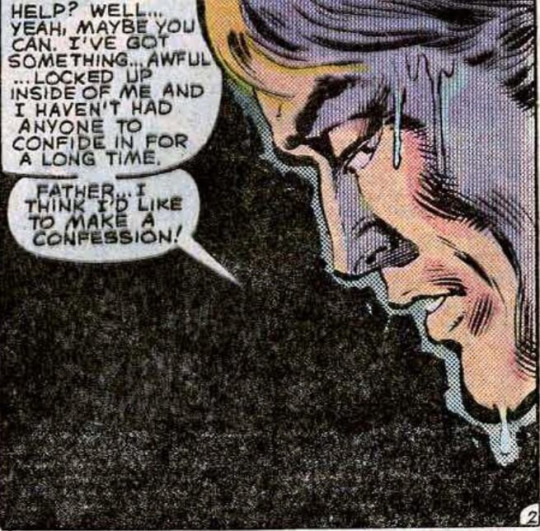
Throughout Stern's tenure, themes of redemption and the eternal struggle between good and evil permeated each issue. Johnny Blaze's internal conflict was brought to the forefront, as he grappled with the consequences of his Faustian bargain and sought to atone for his sins through acts of heroism. Stern's masterful storytelling, coupled with the dynamic artwork of Bob Budiansky, brought a sense of gravitas to each panel, immersing readers in a world where the boundaries between light and darkness blurred
The Ascension of Mephisto: J.M. DeMatteis' Magnum Opus
As Stern's run drew to a close, J.M. DeMatteis took up the mantle, guiding Ghost Rider through his final trials and tribulations. Issue 81, aptly titled 'The End of Ghost Rider,' served as a poignant conclusion to this chapter of Johnny Blaze's journey, offering closure while paving the way for future narratives. DeMatteis' writing brought a sense of depth and introspection to the series, delving into the psyche of both hero and villain alike
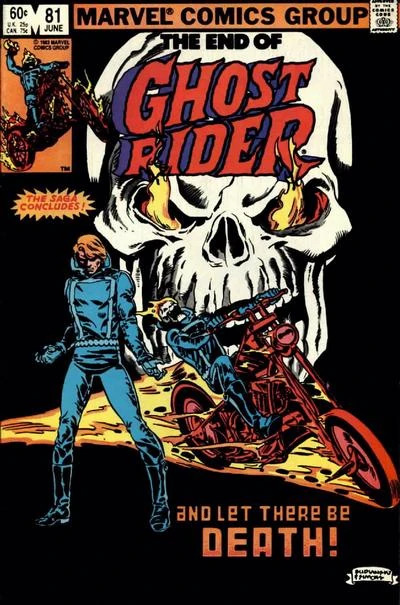
One of the most significant contributions of DeMatteis' tenure was the elevation of Mephisto from mere antagonist to Johnny Blaze's ultimate nemesis. Through intricate storytelling and nuanced characterization, Mephisto emerged as a formidable adversary, a dark mirror to Johnny's tortured soul. Theirs became a battle not only of strength but of willpower and resilience, with each confrontation pushing both characters to their limits
The Redemption of Zarathos: Unraveling the Demon's Past
Central to the Stern-DeMatteis era was the exploration of Zarathos, the demonic entity bound to Johnny Blaze's fate. As the series progressed, glimpses of Zarathos' tragic past emerged, shedding light on the origins of the Spirit of Vengeance and his eternal quest for redemption. Through intricate storytelling and subtle foreshadowing, Stern and DeMatteis wove a tapestry of intrigue and mystery, unraveling the layers of Zarathos' identity while deepening the connection between host and spirit
By delving into Zarathos' backstory, the series added depth and complexity to the character, transforming him from a mere instrument of vengeance into a figure of tragic heroism. His struggles became emblematic of the eternal battle between light and darkness, as he grappled with his own nature while striving to protect those he cared for. In the end, Zarathos' journey mirrored Johnny Blaze's own quest for redemption, forging a bond that transcended the confines of flesh and blood
A Legacy of Flame and Shadow
The Stern-DeMatteis era of Ghost Rider stands as a testament to the transformative power of storytelling within the realm of comics. Through meticulous characterization, intricate plotting, and dynamic artwork, the series breathed new life into the mythos of Ghost Rider, reshaping the character's identity for generations to come. From the retconning of Johnny Blaze's origin to the elevation of Mephisto as his arch-nemesis, each issue served as a building block in a narrative tapestry that explored the depths of human emotion and the eternal struggle between good and evil
As fans look back on this seminal era, they are reminded not only of the trials and tribulations of Johnny Blaze and Mephisto but also of the enduring legacy of Ghost Rider as a character. Through flame and shadow, redemption and damnation, the Spirit of Vengeance endures, a beacon of hope in a world consumed by darkness. And though the fires may wane and the shadows may lengthen, the spirit of Ghost Rider lives on, eternal and unyielding, a testament to the power of storytelling to transcend the boundaries of time and space
Buy Marvel Masterworks: Ghost Rider Vol. 6
#ghost rider#johnny blaze#roger stern#j. m. dematteis#bob budiansky#marvel comics#bronze age comics#jim shooter
22 notes
·
View notes
Text
Captain America: Making of a War Hero into a Symbol of Hope

We all know that Captain America debuted in a title named after him by Joe Simon and Jack Kirby in 1941. He was seen punching Hitler right in the face but many may not know that this was done well before the US had decided to enter World War 2. In fact, at the time, the US was more concerned about its Pacific theater than the Atlantic. Nevertheless, Timely publishes the issue and Captain America gets established as a war hero from the start, who alongside his sidekick Bucky, is fighting fascism in continental Europe which is falling to the Reich like a house of cards
Cap at the time is the symbol of Freedom, anti-fascism, or as he would later be called the Sentinel of Liberty but there was one thing missing at Marvel. The House of Ideas lacked an inspiring figure like Superman among its flagship characters. The Fantastic Four, Spider-Man, The Incredible Hulk, The Invincible Iron Man, and even the Avengers had issues with themselves as well as with each other but a figure whom readers can look up to was something not present. Cap remained a 'man out of time' when he gets discovered by the Avengers but it takes a decade for writers to get him accustomed to the realities of America that were haunting the country from the streets to the Oval Office (Thank You, Jack Kirby and Steve Englehart)
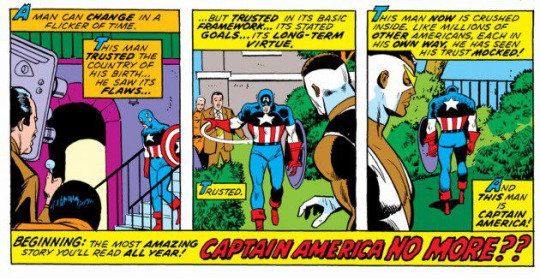
Well into the bronze age era of comics, and under Jim Shooter's reign of the bullpen, a young J.M. DeMatteis shows his potential for storytelling with his first assignment of Captain America no. 261 which would introduce Nomad to the readers for the first time. This issue was supposed to be a collaboration with the real-life Captain America TV movie starring Reb Brown but Jim had other ideas. Issues 261-263 would find Steve Rogers going to California to meet Galactic Films for the upcoming movie about him (in Earth-616) but his real mission was to investigate Nomad's activities on the streets of LA which would turn out to be a deep conspiracy by one of his oldest arch nemesis

After becoming a regular writer on the Captain America series, DeMatteis, Mick Zeck, and John Beatty wrote a story that was way ahead of its time. Today's resurgence of the far left in the world and in the US and the reactionary rise of the far right was being seen by comic book writers like DeMatteis way before many had thought of it. Surprisingly it was a feeble populist villain by the name of Everyman doing the talk, not the Red Skull
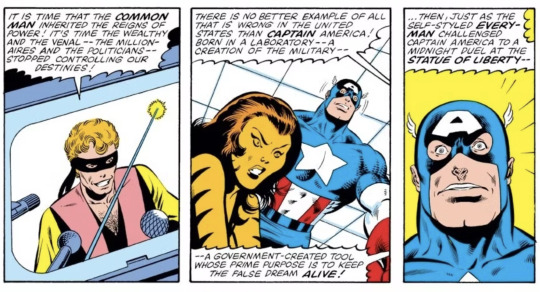
In the story, the disenfranchised youth who looked up to Everyman realize their mistake of choosing 'despair over hope' but what causes them to see this is the humility Cap showed despite being spit at multiple times (literally). His eagerness to listen to the young, to the future of the country and their grievances with America, the American Dream leads to a change of heart
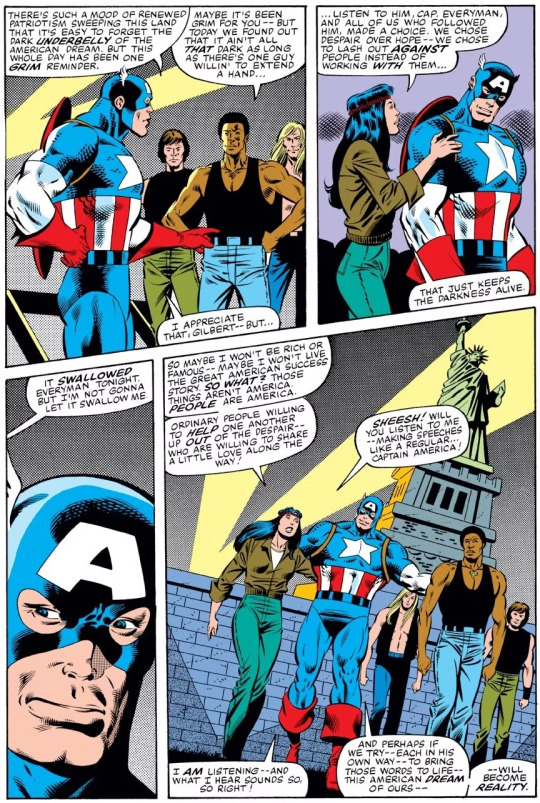
This single-issue story would showcase Cap in a different light. Steve Englehart had given Cap a rude awakening that patriotism can't come at the expense of truth and justice in Secret Empire. He showed Cap's disillusionment with the powers that be in America. DeMatteis took the opposite route to show Cap what's corrupting the country's future, and giving rise to the 'enemy within' who can cause anarchy. It wouldn't be wrong to say that Christopher Nolan's Bane (Dark Knight Rises) reminds us of Everyman but what's important to remember is that it was J.M. DeMatteis who warned us before anyone else did
This story is just the tip of the iceberg. The entire run by DeMatteis is one of the most underrated as it gets overshadowed by the works of Jack Kirby, Steve Englehart, and Mark Gruenwald. Like his works for Spider-Man and Doctor Strange, his work for Cap remains one of the best runs ever
21 notes
·
View notes
Text
Silver Surfer: Judgment Day - A Cosmic Epic of Love and Mephisto's Trials
"Silver Surfer: Judgment Day," a masterpiece crafted by writers Tom DeFalco, John Buscema, and Stan Lee (Script), accompanied by the artistic brilliance of John Buscema and the captivating cover art by Joe Jusko, stands as a testament to the brilliance of storytelling within the Marvel Universe. Released in July 1988, this graphic novel has etched its place among the most celebrated works, particularly for its portrayal of the cosmic entities, Silver Surfer, Galactus, and the malevolent Mephisto
It’s the Surfer vs. Mephisto! Mephisto vs. Galactus! (what could go wrong?)

At the core of the graphic novel is the exploration of the Silver Surfer's character. Known for his cosmic awareness and his stoic demeanor, the story, penned by Tom DeFalco, John Buscema, and Stan Lee, peels back the layers, revealing the emotional complexity beneath the silver exterior. The Surfer's journey, both physically and emotionally, is a crucial aspect that captivates readers and adds depth to the narrative
Mephisto, the lord of the underworld, takes on a role that goes beyond a typical antagonist. His cunning and manipulative nature, beautifully illustrated by John Buscema, is on full display as he orchestrates a trial against the Silver Surfer. This isn't merely a cosmic battle; it's a psychological chess game where Mephisto exploits vulnerabilities and challenges the very essence of the Surfer's being
In his quest to steal Norrin Radd's soul, Mephisto takes over Nova's (Frankie Raye) mind to lure Galactus to devour any planet be it with or without life

"Silver Surfer: Judgment Day" transcends the boundaries of traditional superhero tales by delving into profound philosophical themes. The nature of love, morality, and the consequences of wielding cosmic powers, as depicted by the collaborative writing of Tom DeFalco, John Buscema, and Stan Lee, are explored in a way that prompts readers to reflect on their own beliefs. The story becomes a vehicle for philosophical contemplation, elevating it to a level rarely seen in mainstream comics
The artistic elements of the graphic novel, skillfully crafted by John Buscema, contribute significantly to its acclaim. The visuals bring the cosmic and surreal aspects of the story to life. Each panel is a work of art, enhancing the overall reading experience and immersing the audience in the grandiosity of the Marvel cosmic landscape
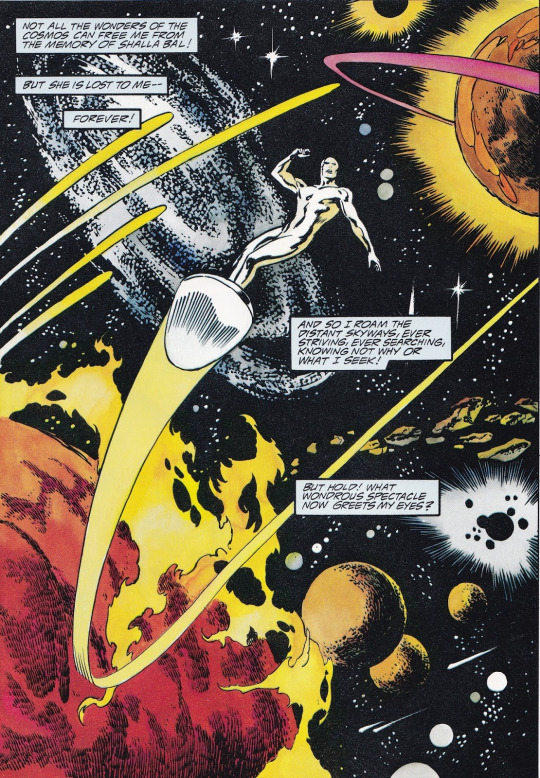
The narrative structure of "Silver Surfer: Judgment Day" is both intricate and impactful. The consequences of the trial, the Surfer's choices, and the overarching themes leave a lasting impression. It's not just a superhero story; it's an emotionally resonant journey that lingers in the minds of readers
At the heart of the story is the Surfer's love for a human woman, a theme that adds a human touch to the cosmic drama. The exploration of love and the sacrifices one is willing to make for it elevate the narrative, making it relatable on a deeply emotional level. Mephisto's challenge becomes a metaphor for the trials and tribulations faced in the name of love
Beyond its critical acclaim, "Silver Surfer: Judgment Day" has had a lasting impact on the cultural landscape. With the collaborative writing of Tom DeFalco, John Buscema, and Stan Lee, along with John Buscema's artistic brilliance and Joe Jusko's captivating cover art, it has become a reference point for discussions on the portrayal of love and morality in superhero narratives. Its influence extends beyond the comic book community, reaching a broader audience appreciative of well-crafted storytelling
In conclusion, "Silver Surfer: Judgment Day" is a cosmic epic that transcends the boundaries of conventional superhero tales. Its critical acclaim is well-deserved, considering its exploration of character depth, philosophical themes, Mephisto's role as a nuanced antagonist, artistic brilliance, impactful storytelling, and cultural relevance. It not only stands as one of the best Silver Surfer stories but also as a shining example of the narrative possibilities within the Marvel Universe
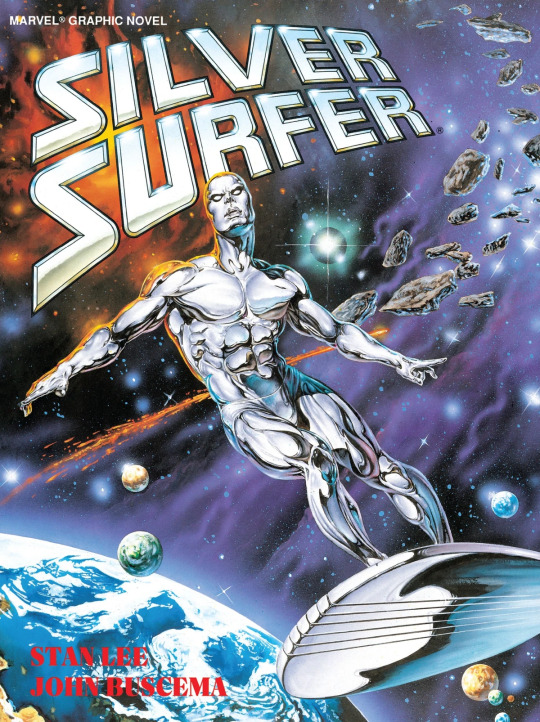
#silver surfer#mephisto#galactus#nova#frankie raye#judgement day#stan lee#tom defalco#john buscema#joe jusko#marvel comics#marvel graphic novel#80s
12 notes
·
View notes
Text

4 notes
·
View notes
Text
Marvel's Short Stories That Redefined Superhero Comics
In the rich tapestry of Marvel Comics, there are epic sagas and sweeping crossovers that capture our imaginations and define the superhero genre. However, some of the most profound and enduring tales are found in the pages of shorter stories—narratives that span four issues or fewer. These concise yet impactful stories have left an indelible mark on readership, the comic book industry, and how we perceive superheroes. Let's explore how these short stories, including "Powerless," reshaped the world of Marvel Comics
1. "X-Men: Days of Future Past" (Uncanny X-Men #141-142, 1981)
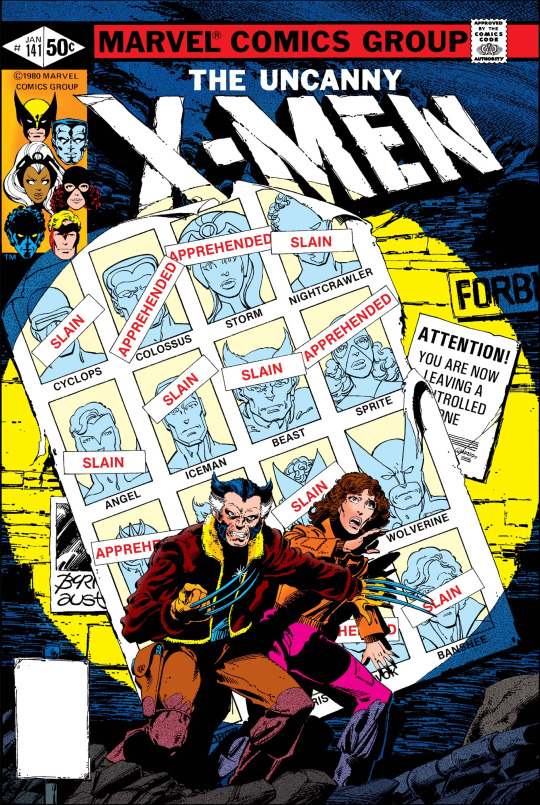
"Days of Future Past" catapulted readers into a dystopian future where mutants are hunted to near extinction. This tale of time travel and the consequences of prejudice resonated deeply. It showcased the potential for comic books to address social issues, shining a spotlight on bigotry and discrimination. Its influence can be seen in subsequent X-Men stories that continue to tackle real-world problems
2. "The Kid Who Collects Spider-Man" (The Amazing Spider-Man #248, 1984)
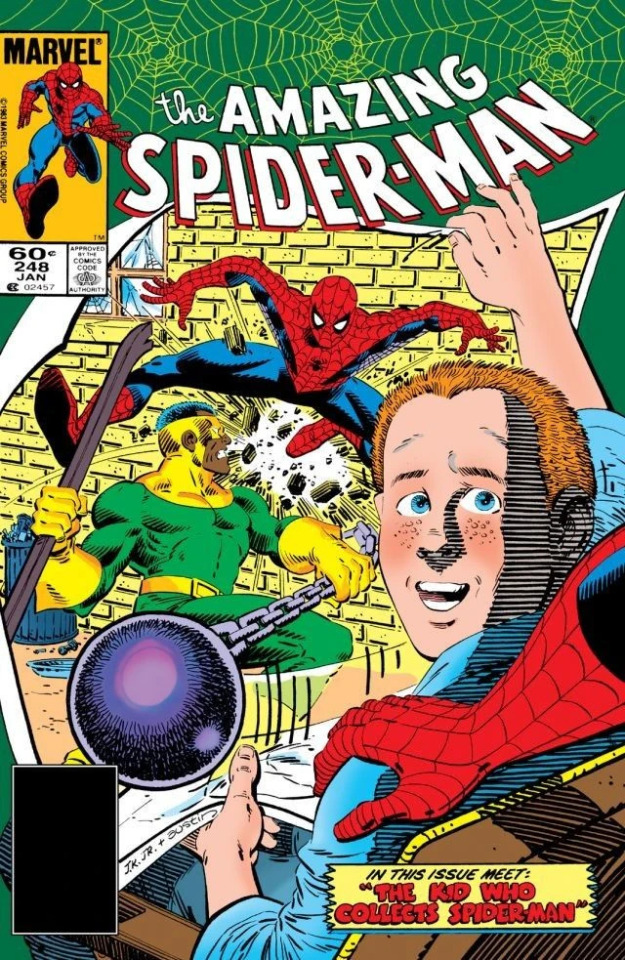
A single-issue masterpiece, this story touched the hearts of readers worldwide. It revealed the human side of superheroes, reminding us that these characters, despite their extraordinary abilities, are grounded in humanity. "The Kid Who Collects Spider-Man" humanized the superhero genre, emphasizing the impact these icons can have on fans
3. "Vision and the Scarlet Witch" (Vision and the Scarlet Witch #1-4, 1982)

While not strictly a short story but much shorter than "Demon in a Bottle", this series explored the personal lives of two Avengers in an intimate and relatable way. It demonstrated that superheroes are not just costumes and powers but individuals with complex emotions and relationships. "Vision and the Scarlet Witch" (not The Vision and the Scarlet Witch 12 issues series) redefined the portrayal of personal lives within the superhero genre
4. "The Night Gwen Stacy Died" (The Amazing Spider-Man #121-122, 1973)
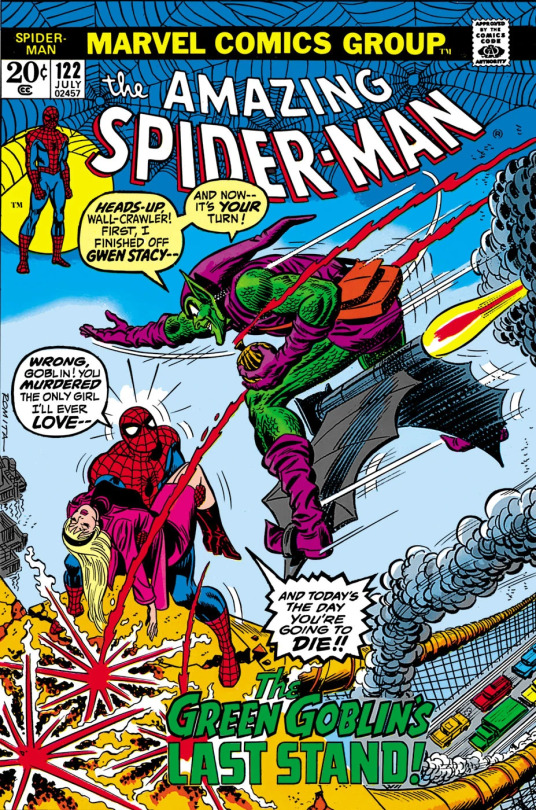
The story that started the Bronze Age! This two-issue arc forever altered the perception of superhero storytelling. The death of Gwen Stacy was a turning point, showcasing that superheroes do not always emerge victorious and unscathed. It added a layer of realism and emotional depth to Spider-Man's world
5. "The Death of Jean DeWolff" (The Spectacular Spider-Man #107-110, 1985)

A gritty murder mystery within Spider-Man's world, this story proved that superheroes can explore darker themes. It demonstrated the versatility of the genre, showing that it could tackle complex and mature subject matter
6. "God Loves, Man Kills" (Marvel Graphic Novel no. 5)

This graphic novel delved into themes of prejudice and discrimination. It elevated the X-Men beyond mere superheroics, highlighting the allegorical nature of their struggle. "God Loves, Man Kills" made it clear that comics could be a powerful platform for social commentary
7. "The Trial of Reed Richards" (Fantastic Four #262-265, 1984)

This storyline explored the legal ramifications of superhero actions. It demonstrated that superheroes are not above the law and can be held accountable for their actions. "The Trial of Reed Richards" added a layer of complexity to the superhero genre, reflecting real-world concerns
8. "Marvels" (Marvels #1-4, 1994)
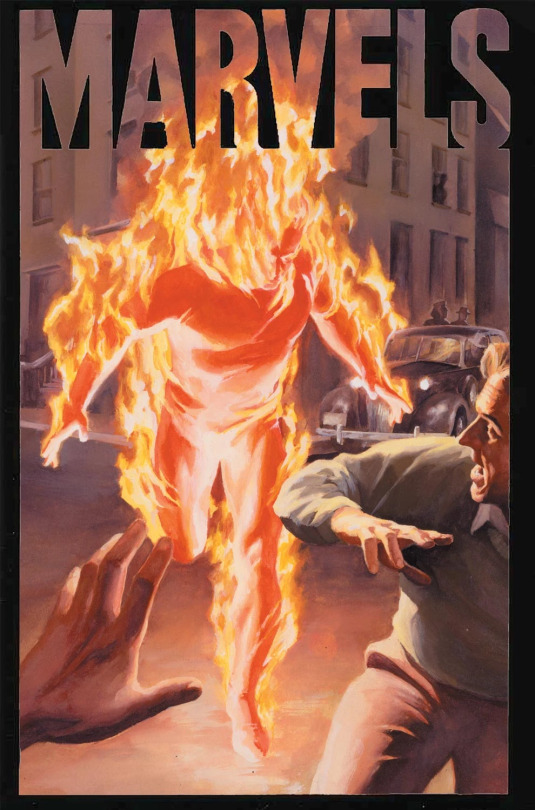
This four-issue limited series takes a unique approach by exploring the lives of ordinary people in a world filled with superheroes. It delves into themes of powerlessness and how everyday individuals navigate a world where superhuman abilities are the norm. "Marvels" offers a different perspective from the eye(s) of journalist Phil Sheldon on the Marvel Universe, highlighting the challenges faced by those who can't match the extraordinary feats of superheroes
In conclusion, these short stories within the Marvel Universe have left an enduring legacy. They impacted readers by addressing real-world issues, challenged the comic book industry to embrace mature and diverse storytelling, and redefined how we perceive superheroes. These tales remind us that beneath the masks and capes, superheroes are reflections of our own humanity, and their stories can be as complex and thought-provoking as any other literary genre
Marvel's short stories have proven that superhero comics are more than just entertainment; they mirror our world and aspirations. These concise narratives have shown that profound storytelling can occur within the limited confines of a few issues. They have opened the doors for deeper exploration of characters, themes, and societal issues, and they continue to inspire creators and readers alike to push the boundaries of what superhero comics can achieve
In a genre often associated with bombastic battles and larger-than-life conflicts, these short stories are a testament to the enduring power of storytelling and the ability of comics to engage our hearts and minds. As we celebrate the impact of these narratives, we are reminded that sometimes, the most significant stories come in the smallest packages
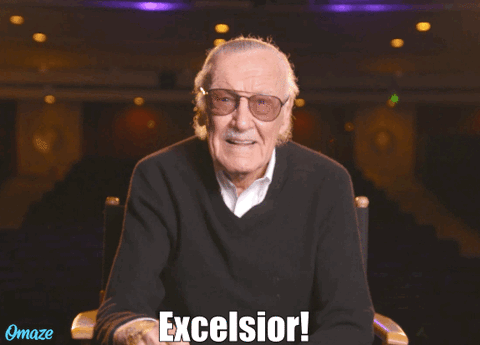
#marvel comics#short stories#dystopia#real life drama#chris claremont#roger stern#john byrne#peter david#gerry conway#kurt busiek#alex ross#bill mantlo#crime#social issues
27 notes
·
View notes
Text
John Byrne and Walt Simonson: The Unmatched Legacy in Fantastic Four and Thor
When it comes to the world of comic books, there are certain iconic names that instantly come to mind. Stan Lee and Jack Kirby, the creative geniuses behind characters like the Fantastic Four and Thor, are undoubtedly among the most revered figures in the industry. Their groundbreaking work laid the foundation for the Marvel Universe and set a high standard for storytelling. However, it's essential to recognize that the legacy of these characters didn't stop with Lee and Kirby. Two other legendary creators, John Byrne and Walt Simonson, took the reins and left an indelible mark on the Fantastic Four and Thor, ensuring that their contributions would remain unmatched for generations to come.
John Byrne's Fantastic Four (1981-1986): Redefining Marvel's First Family
In 1981, John Byrne had a mission: to redefine the Fantastic Four. Byrne's run on the series is often regarded as one of the most significant in the history of the team. He brought a fresh perspective to the characters and their dynamics, breathing new life into Marvel's First Family.
Byrne's artistic talents were on full display as he not only wrote but also illustrated the series. His attention to detail and ability to convey emotions through his artwork added depth to the characters. Byrne's run gave us memorable storylines such as "The Trial of Reed Richards" and the return of the iconic villain, Galactus. He also introduced new characters like She-Hulk, who would become a fan-favorite in her own right.
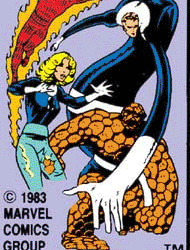
What made Byrne's run truly exceptional was his ability to balance character development with epic storytelling. The Fantastic Four faced personal challenges while also tackling cosmic threats, creating a perfect blend of drama and action. Byrne's work on the series is a testament to his storytelling prowess and his dedication to preserving the essence of these beloved characters.
One of the key aspects of Byrne's run was his exploration of the dynamics within the Fantastic Four. He delved deep into the relationships between Reed Richards (Mr. Fantastic), Sue Storm (Invisible Woman), Johnny Storm (Human Torch), and Ben Grimm (The Thing). The interpersonal conflicts and growth of these characters made the series not just about super-heroics but also about family, a theme that resonated with readers and set the stage for future interpretations of the team.
Walt Simonson's Thor (1983-1987): The God of Thunder's Epic Journey
Simultaneously, over in the realm of Asgard, Walt Simonson took up the mantle of Thor in 1983. Much like Byrne, Simonson's run on Thor is celebrated as a defining era for the character and the series. He brought a mythic grandeur and a sense of epic adventure that elevated Thor's stories to new heights.
Simonson's Thor was a masterclass in world-building. He introduced iconic elements like Beta Ray Bill and the mystical weapon, Stormbreaker. Simonson's writing delved into the rich tapestry of Norse mythology, creating a sense of wonder and authenticity in Asgard's portrayal. His artistic style and intricate panel layouts added to the epic feel of the series, making every issue a visual masterpiece.
One of the most memorable arcs of Simonson's run was "The Surtur Saga," a sprawling epic that saw Thor facing off against the fire demon Surtur. The impact of this storyline resonates even today, and it remains a benchmark for epic storytelling in comic books.
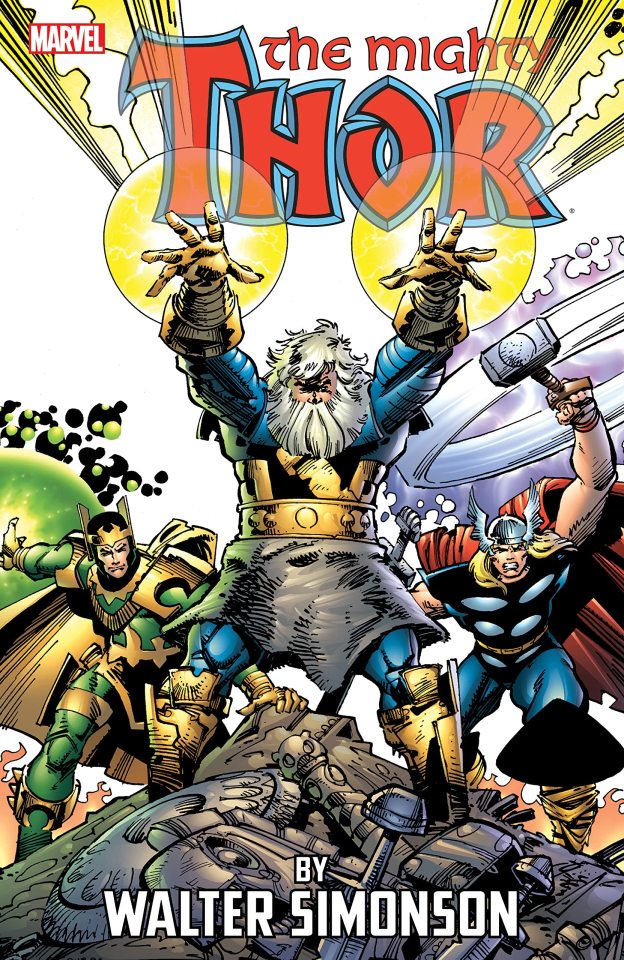
Simonson's take on Thor was not just about battles and grand spectacles; it also delved into the character's humanity. He explored the burdens of godhood and the responsibility that came with wielding the power of Mjolnir. Thor's inner struggles and his unwavering sense of duty added depth to the character, making him relatable on a personal level.
In Conclusion, the creative endeavors of John Byrne on the Fantastic Four and Walt Simonson on Thor are nothing short of legendary. While Stan Lee and Jack Kirby's contributions are undeniably classic and groundbreaking, Byrne and Simonson's work brought these characters to new heights. Their storytelling prowess, artistic talents, and deep appreciation for the source material ensured that their runs on these series would remain unmatched for generations to come. The legacy of these four creators, Lee, Kirby, Byrne, and Simonson, continues to shape the Marvel Universe and inspire fans and creators alike, proving that the world of comic books is a rich tapestry woven by many hands.
In the end, what sets Byrne and Simonson apart is their ability to not only build upon the foundations laid by Lee and Kirby but also to leave an indelible mark that would define these characters for years to come. Their contributions to the Fantastic Four and Thor are a testament to the enduring power of storytelling in the comic book medium, and they shall continue to captivate readers and creators alike for generations to come.

Get John Byrne's Classic Marvel Collection here
Get Walt Simonson's Classic Marvel Collection here
#john byrne#walt simonson#marvel comics#fantastic four#thor#jim shooter#stan lee#jack kirby#80s#she hulk#beta ray bill
28 notes
·
View notes
Text
The Multifaceted Brilliance: Dan Green's Artistry in 'Doctor Strange: Into Shamballa'
It's fascinating to dive into the realm of Marvel Comics and explore the often underrated talents like Dan Green. While he's widely recognized for his inking contributions, his own artistic prowess often takes a backseat. Let's shed some light on Dan Green's multifaceted talents and the masterpiece "Doctor Strange: Into Shamballa."

Dan Green's artistic abilities shine through in an industry where inkers might not always receive the spotlight they deserve. While primarily known for his inking collaborations with various artists, it's essential to recognize that he's not only a skilled inker but also a talented artist in his own right
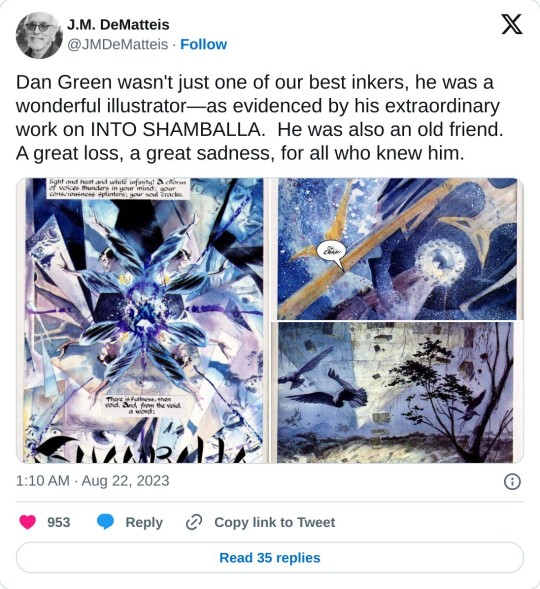
View on Twitter
One of the standout works that truly showcases Green's prowess is the graphic novel "Doctor Strange: Into Shamballa," which he co-wrote alongside the legendary J.M. DeMatteis. This collaboration might be lesser known to many, given their individual accomplishments in X-Men, Doctor Strange, Spider-Man, and Captain America comics (to name a few). "Into Shamballa" serves as a testament to their creative synergy and their ability to craft a unique and captivating story within the Marvel universe
This graphic novel takes readers on a mystic journey with Doctor Strange, exploring both the outer and inner dimensions of reality. Green's artistry here doesn't just involve inking; it encompasses intricate pencil work and co-storytelling that adds depth to the narrative. His visual interpretation of the mystical realms and the characters' emotions adds a unique layer to the storytelling process

Critics and fellow comic book creators alike have recognized the significance of "Doctor Strange: Into Shamballa." The graphic novel stands as a jewel in the crowns of both Green and DeMatteis. Prominent figures in the comic book industry have praised their collaboration. Renowned comic artist and writer Neil Gaiman commented, "Green's art brings an ethereal quality to the story, enhancing the magical atmosphere."

Moreover, comic book enthusiasts and Marvel fans need to acknowledge that artists like Dan Green aren't limited to a single role. His ability to contribute to the narrative structure alongside his inking talents marks him as an invaluable asset in shaping the visual and emotional experience of a comic
As Marvel fans delve into the depths of its history, "Doctor Strange: Into Shamballa" should stand out as a testament to Green's artistic versatility and storytelling abilities. It's a reminder that artists, regardless of their primary roles, contribute significantly to the magic of the comic book world. So let's celebrate Dan Green not only as an inker but also as a co-creator who has left an indelible mark on the Marvel universe
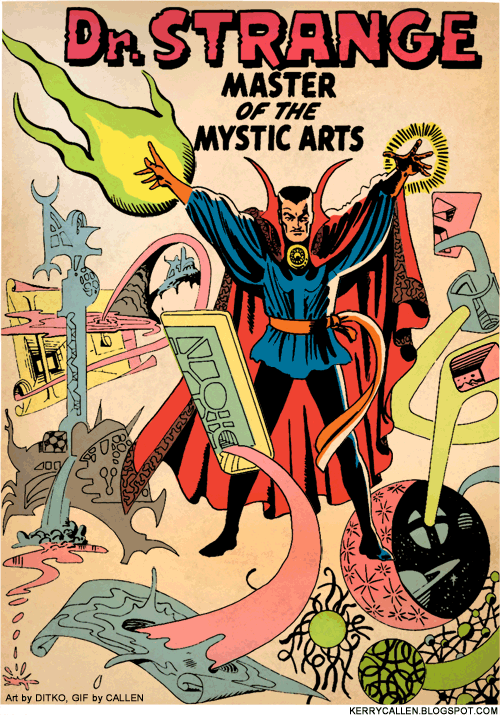
Get Your Copy of Doctor Strange: Into Shamballa
#dan green#marvel comics#marvel graphic novel#80s comics#j. m. dematteis#doctor strange#into shamballa
8 notes
·
View notes
Text
The Success Story of Marvel’s Secret Invasion Crossover Event
In the autumn of 1961, Stan Lee and Jack Kirby introduced a shape-shifting alien race who we would know as Skrulls. They would make their first appearance in The Fantastic Four no. 2 and they would get entangled with the Avengers a few years later during the Kree-Skrull War. No one had imagined how this alien race would make a comeback that would have a lasting impact on the Marvel Universe as well as its readership
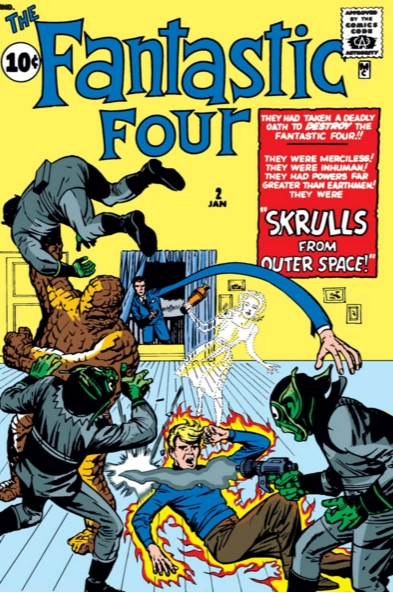
While Secret Invasion was published in 2008 before that Brian Michael Bendis had been planting the seeds for it in Avengers: Disassembled, New Avengers: Breakout, and Secret War. Something big was about to happen but no one had any idea who was behind it or why. The success lay in the fact that Bendis had remained tight-lipped throughout and every crossover event that followed up until the time when the full-scale invasion happened, shocked the readers, made them wonder about the characters they were so familiar with and whether they were what they showed themselves to be. It wasn’t about Skrulls shape-shifting to look like humans or superheroes and even super villains, it was also about the adoption of their target’s personality completely. This wasn’t a Personality Disorder, it was the Order!
Marvel's Secret Invasion comic book crossover event was highly successful for several reasons. Here are some key factors that contributed to its success:
1. Strong Concept: Secret Invasion had a compelling premise that captivated readers. The story centered around the infiltration of Earth by shape-shifting Skrull aliens who had replaced key Marvel characters. This concept generated excitement and intrigue, as readers were left guessing who was a Skrull and who could be trusted
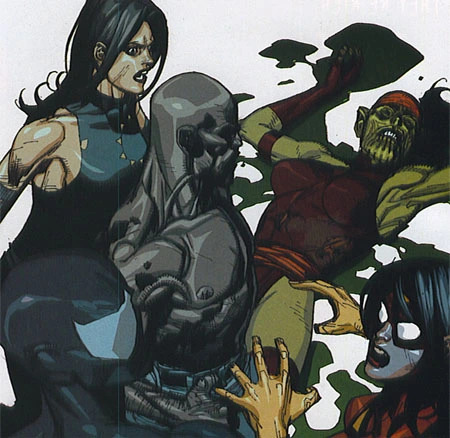
2. Impactful Storytelling: The event was meticulously planned and executed by writer Brian Michael Bendis, who created a suspenseful and intricate storyline. Bendis crafted a narrative that had significant repercussions across the Marvel Universe. The invasion resulted in significant character developments, shocking reveals, and dramatic confrontations, keeping readers engaged and eager to see how it all unfolded

3. Character-driven Drama: Secret Invasion explored the psychological and emotional impact of the Skrull infiltration on the Marvel heroes. The story delved into themes of trust, betrayal, and identity, as beloved characters faced the unsettling reality that their friends and allies could be impostors. This focus on character-driven drama added depth and complexity to the event
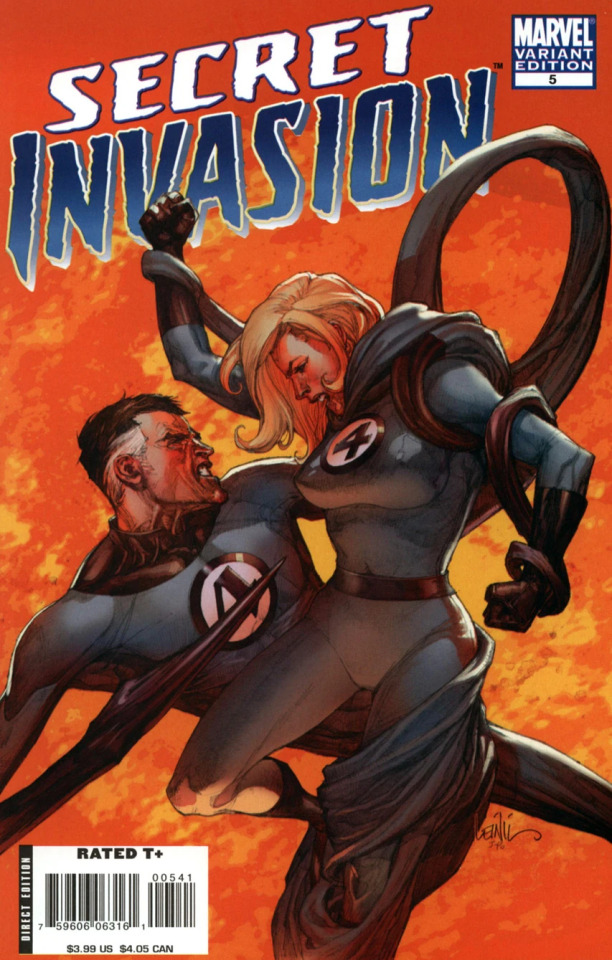
4. Wide-scale Impact: The event had far-reaching consequences beyond the main Secret Invasion series. Tie-in issues and spin-off titles explored the invasion's effects on different corners of the Marvel Universe, involving various characters and teams
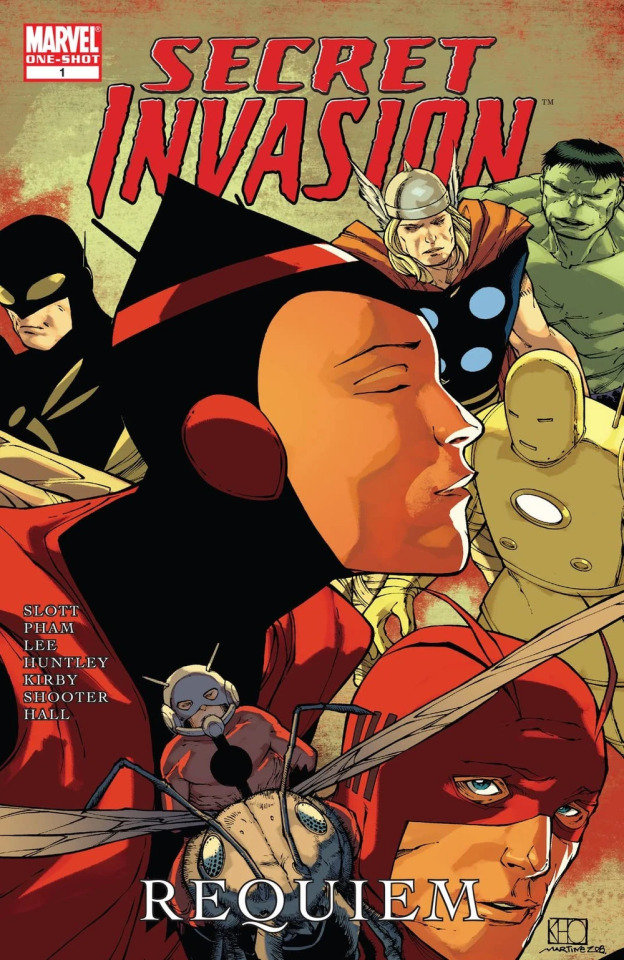
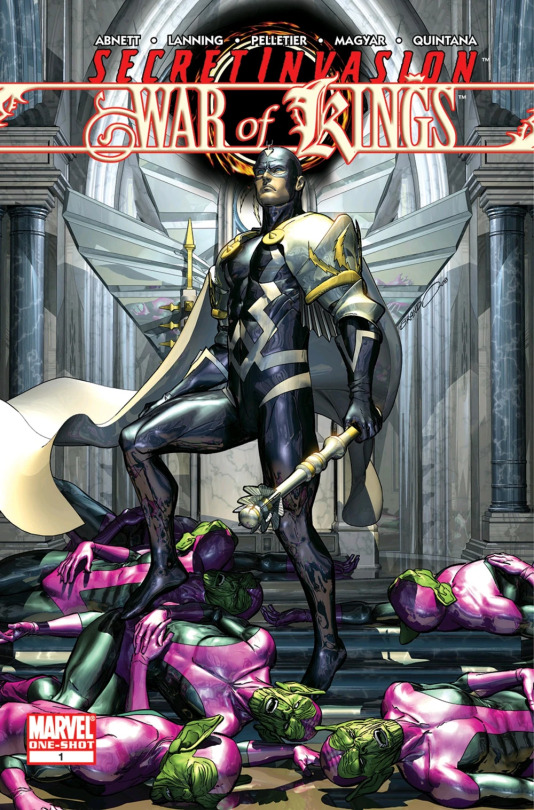

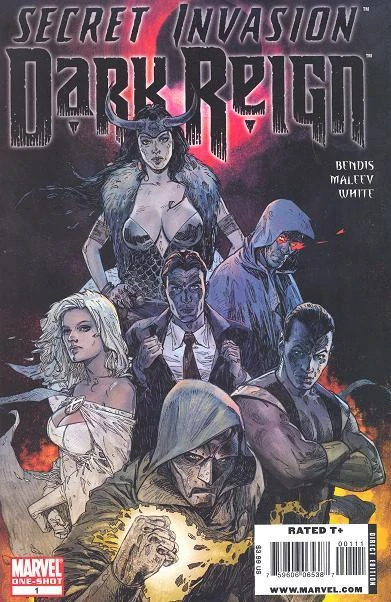
Brian Michael Bendis will forever be remembered for making the Skrulls an unclear and ever-present threat at a scale that would make his predecessors admire him in the Valhalla of comic creators
Secret Invasion MUST Haves:
#secret invasion#Marvel Comics#avengers#fantastic four#x-men#thunderbolts#stan lee#jack kirby#roy thomas#john buscema#neal adams#brian michael bendis#leinil francis yu#nick fury#inhumans#the hood's crime syndicate
21 notes
·
View notes